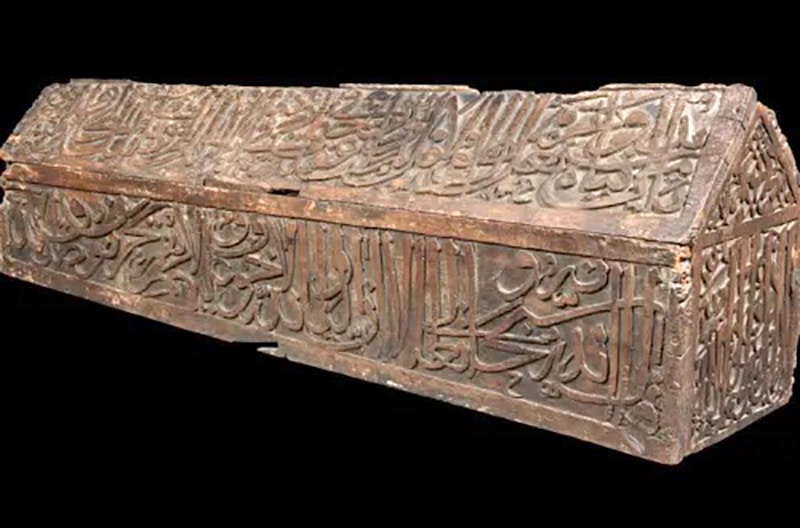KUWAIT: Dar Al-Athar Al-Islamiyya’s journey began at the hands of the late Sheikh Nasser Sabah Al-Ahmad Al-Sabah and his wife, Sheikha Hessa Sabah Al-Salem Al-Sabah, who owned an archaeological collection that helped establish one of the best museums in Kuwait and the world exhibiting Islamic artifacts over the past 40 years. The museum includes a collection of pieces from across the Islamic world under the name "Al-Sabah Archaeological Collection”.
The beginning was with the acquisition of the first antique piece owned by Sheikh Nasser Al-Sabah in 1975: A glass vessel coated with enamel dating back to the mid-14th century AD. After that, his passion for collecting artifacts dating back to early Islamic periods only grew. Sheikh Nasser shared his hobby with lovers and collectors of antiquities, specifically his friend Jassim Al-Humaidhi, who had his own art collection. Al-Sabah Archaeological Collection continued to grow until it was transferred from Sheikh Nasser’s home to the Kuwait National Museum in 1983 as the museum first opened its doors at the request of the Kuwaiti government.
The collection was displayed at the museum to raise the level of artistic awareness and cultural, archaeological, and historical heritage. Since then, Building No 3 at the museum, which contains the Al-Sabah collection, became known as Dar Al-Athar Al-Islamiyya, and the collection remained there until August 1990, the date of the Iraqi invasion of Kuwait. Sheikh Nasser was keen to restore his collection, which was stolen to Baghdad. In cooperation with the United Nations, he could recover most of the pieces in 1991 but some of them had been severely damaged due to transportation and storage.
After the recovery of most of the antiquities, valuable pieces remained missing until one of the most valuable pieces was found in 1996 by chance when a picture of a dagger encrusted with precious stones was published in an illustrated booklet of the Sotheby’s auction hall in London. To date, 59 rare artifacts are still missing.
The Al-Sabah archaeological collection currently includes about 30,000 pieces of art, part of which is displayed in exhibitions in the American Cultural Center, while the rest of the holdings are preserved in the Yarmouk Cultural Center. Dar Al-Athar Al-Islamiyya operates through these two centers under the umbrella of the National Council for Culture, Arts and Letters and with supervision from Sheikha Hessa Sabah Al-Salem Al-Sabah.
The exhibits include an archaeological collection of various materials, such as ceramics, glass, ivory, wood, jewels, manuscripts, artifacts, coins, carpets, textiles, stone, plaster, and others. The Al-Sabah collection includes various antiquities produced from ceramics, which is considered one of the oldest materials used in industry and dates back to the Paleolithic era. Among the group is a pottery bowl decorated with modified plant elements brought from Iraq and dating back to the ninth century AD.
The collection also includes glassware dating back to 4,500 years ago, most of which were produced in Iran, Syria and Egypt, including a jug of blown glass decorated with a different color handle, produced in the Levant in the pre-Islamic period in the 6th-7th century AD. Moreover, the Al-Sabah collection abounds with unique pieces of jewels and precious stones, the most prominent of which are jewelry dating back to the Mughal regions of India and the Deccan Plateau in India in the 16th and 18th centuries AD. The Al-Sabah collection includes a large number of manuscripts of the Holy Quran, including pages for one of the oldest Quranic manuscripts, which were copied in the second century in the Hijazi script.
The collection also includes archaeological holdings of coins amounting to more than 12,000 coins covering a wide swath of the Islamic world over 6000 years. The oldest coin from the collection dates back to the Bronze Age. Sheikh Nasser and his wife also participated in many museums and exhibitions that toured the world. Dar Al-Athar Al-Islamiyya also cooperated with the world’s oldest museums and cultural institutions during the past 40 years and is still working with passion to build bridges of communication between Kuwait and the world. Dar Al-Athar Al-Islamiyya spent the past decades serving art and culture, as it expanded from collecting antiques to holding annual cultural seasons that include a variety of activities such as lectures and musical evenings, in addition to holding exhibitions, art workshops and conferences. – KUNA





